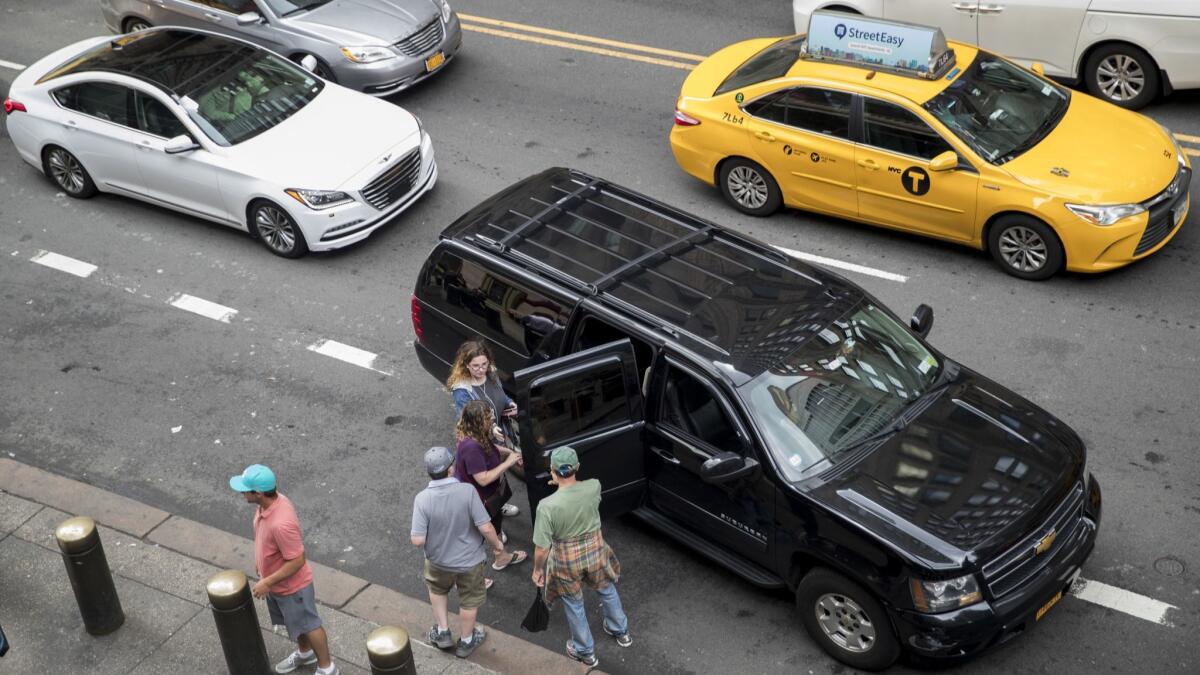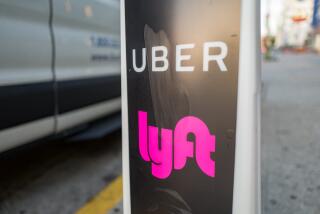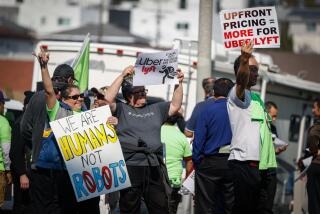New York City caps Uber and Lyft vehicles — a first-in-the-nation move

The New York City Council dealt a political blow to Uber Technologies Inc. and other app-based ride-hailing companies by approving a one-year industrywide cap on new licenses and giving the city Taxi & Limousine Commission authority to set minimum pay standards for drivers.
The passage of sweeping industry regulations signaled politicians’ changed attitudes toward the gig economy and electronic car-hailing services such as Uber, Lyft Inc. and Via Transportation Inc.
The council voted against a similar cap proposed by Mayor Bill de Blasio three years ago after Uber mounted a television ad campaign and mobilized drivers and customers to oppose it. App-based licenses have since increased to more than 80,000 from 12,600, according to the Taxi & Limousine Commission.
“We are not taking away any service that is currently being offered to customers,” Council Speaker Corey Johnson said at a news conference. “This is about supporting and uplifting drivers.”
Unrestrained growth has increased congestion in central Manhattan, and heightened competition has suppressed pay for drivers of yellow cabs, black car liveries and luxury limousines. Hundreds of cab owners couldn’t earn enough to pay for their car leases and taxi-license medallions, and economic desperation became a factor in at least six driver suicides since November. About 85% of drivers for app-based companies earn less than $17.22 an hour, according to an industry study by the New School’s Center for New York City Affairs.
The app-based ride-hailing companies argued against the cap, saying it would shrink the number of available drivers and encourage them to seek passengers in midtown Manhattan rather than other parts of the city. Uber supported the minimum-pay standard that will obligate the company to make up the difference when drivers’ earnings fell short, seeing it as a way to give the company an incentive to limit its size instead of ceding that role to the government, said Jason Post, a company spokesman. The level of the pay floor is still to be determined.
The law calls for the cap to remain in effect for a year, during which city regulators will study the economic and environmental impact of the ride-hailing industry, without restricting licenses for wheelchair-accessible cars. Post said the moratorium on new licenses and the minimum pay floor were the first in the United States to be imposed on his company.
Scott Solombrino, chief executive of Dav El, a New York City chauffeured limousine service, objected to including businesses like his under the cap, saying it would inhibit their growth even though they don’t contribute to the problems of congestion and underpaid drivers.
One unforeseen development since Uber and Lyft entered New York has been the plunging value of the traditional taxi medallions — the licenses that let taxis pick up passengers on the street. As recently as four years ago, the medallions were changing hands at prices reaching $1 million. They were considered such a ticket to guaranteed income, banks allowed owners to borrow huge sums against them for home mortgages or school loans.
Now, many of those loans are coming due. Drivers no longer have the income to pay them off. And with medallions now trading at $200,000 or less, owners don’t have the collateral to refinance.
The level of upheaval in the industry hasn’t been seen on this scale since the first half of the 20th century, when the medallion system was put in place to deal with issues of competition, said Graham Hodges, a professor of history at Colgate University.
Flaws in that system, such as racial profiling and inadequate demand, “made it easy for Uber, Lyft and the others to come in [and] say, ‘We’re going to provide a much better service,’ ” he said.
“That doesn’t mean those flaws couldn’t be remedied without destroying the system,” he said.
The Associated Press was used in compiling this report.
UPDATES:
3:40 p.m.: This article was updated throughout with additional details and background information.
This article was originally published at 2:30 p.m.






